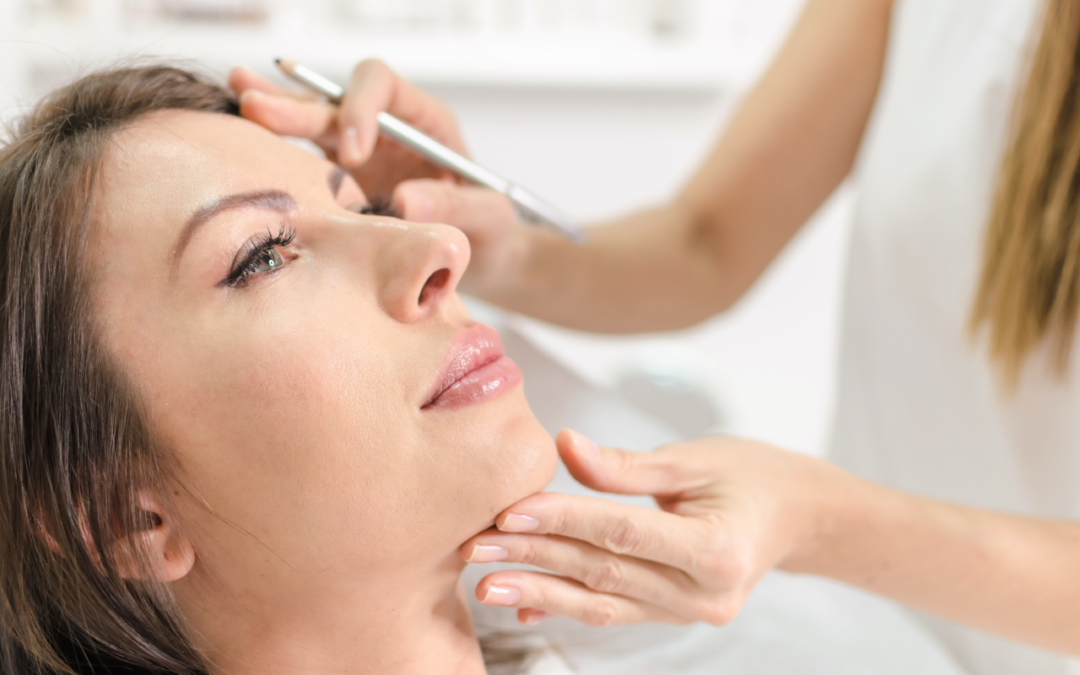The use of Botox and Dermal Fillers has only increased in popularity over the past few decades, with materials becoming safer and techniques more fine-tuned to meet the demand and safety standards of doctors and patients. There’s a lot of conflicting and confusing information out there and our goal is and has always been education first. Here is a brief and helpful guide explaining the uses and differences of Botox and Dermal Fillers.
What is Botox?
Botox is the brand name of a purified form of the botulinum toxin (called onabotulinumtoxinA), a neurotoxic protein produced by the Clostridium botulinum bacteria. Though deadly in large amounts, the miniscule amounts used in Botox injections are FDA approved and have been used safely for decades to treat wrinkles, migraines, muscle spasms, and hyperhidrosis.
Why Would I Want to Use Botox?
When injected into the muscle, Botox temporarily paralyzes the area, preventing the muscle from contracting. This temporary paralysis has a smoothing effect, making fine lines and wrinkles less noticeable and minimizing the depth of the wrinkle over time as well. Results are seen 1 to 3 days after treatment. Since Botox only works on wrinkles that are caused by muscle contractions, it is most useful for lines between the eyebrows, around the eyes, and on the forehead. It will not be effective on lines and wrinkles caused by loss of firmness. These are known as static wrinkles and are seen in the cheek, jowl, and neck areas.
How Long Does Botox Last and Are There Any Side-Effects?
Botox typically lasts 3 to 6 months, depending on the individual and how quickly it is metabolized. Though rare, side-effects can happen but most are temporary. Possible side-effects include:
- Drooping of the eyelid or brow
- Weakness or paralysis of nearby muscles
- Hives, rashes, and itching
- Bruising, pain, and swelling or redness
- Trouble swallowing, speaking, or breathing
- Blurry vision
It is recommended that patients do not rub or massage the area after treatment as it could spread to surrounding areas, although making natural facial expressions is perfectly fine. Additionally, in less than 1 percent of patients who have had repeated injections, the treatment may fail to work properly due to antibodies fighting the toxin.
What are Dermal Fillers?
Dermal fillers are also injected through a syringe and come in a variety of temporary or permanent materials. Hyaluronic acid fillers are the most common type of filler. While they also treat wrinkles on the face, they differ from Botox in that they are best used for the soft tissues as opposed to the muscle.
As we age, we produce less collagen, elastin, and hyaluronic acid, all of which are the main contributing factors to plump, youthful skin. As the name implies, these “fillers” fill in the compressed spaces caused by this natural decline. These come in varying thickness and target various problems, from delicate lip lines to deep smile lines. Fillers can last from 6 to 18 months depending on the material used, where it’s used, and the individuals’ rate of metabolism.
Restorations Medical Spa uses a variety of fillers for different applications. We currently use Juvederm Volbella® XC, Juvederm® Ultra XC, Juvederm Voluma® XC, Juvederm® XC, Juvederm Vollure™ XC, and Kybella.
All Dermal Fillers have similar side effects, these include:
- Bruising
- Redness
- Swelling
These side-effects are almost always temporary. Hyaluronic acid fillers are considered the safest while collagen fillers have shown an increased incidence of allergic reaction. Restorations Medical Spa uses only the pure, undiluted form of Botox and only the safest, most effective types of Dermal Fillers. We have over 20 years of experience administering Botox and Dermal Fillers and undergo continual training to provide the best service and experience to our patients. Facial injections are not right for everyone but we can help you determine an appropriate treatment protocol to suit your individual needs and goals.
Restorations Medical Spa is Bartlesville’s preeminent medical spa, serving northeastern Oklahoma, southern Kansas, and surrounding areas.

